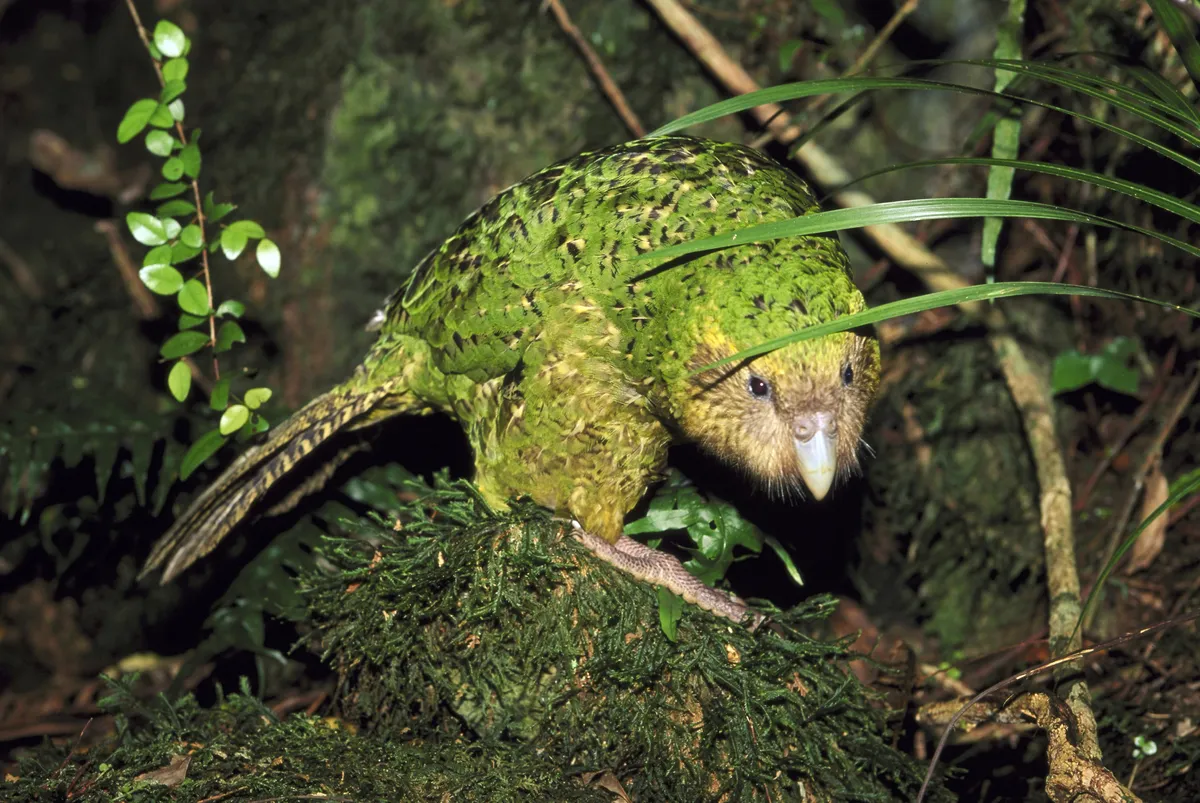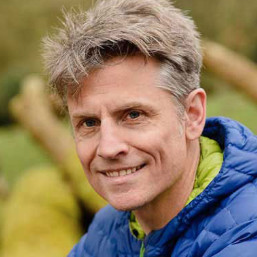It has been done on Lundy (size: 4.45km²), Ruapuke Island (16km²) and South Georgia (3,500km²), but now conservationists want to eliminate non-native, invasive predators from much, much larger sites: New Zealand’s North (114,000km²) and South (150,000km²) Islands.
No one denies that it is an admirable ambition because alien, mainly European mammals have had a devastating impact on New Zealand’s native fauna, with an estimated 25–30 bird extinctions, plus losses of reptiles, amphibians and insects.
- Why was New Zealand once free of land mammals?
- New Zealand’s endangered flightless birds are retreating to 'moa graveyards' – and it could save them from extinction
So when the government in Wellington announced it would aim to eradicate three species of rat, as well as stoats, weasels, ferrets and brush-tailed possums, the entire world took notice. It was bold and aspirational – but could it be done? And was it actually a good idea?
A big part of the new approach, explains Jessi Morgan of the Predator Free New Zealand Trust (generally shortened to PFNZ), is that the drive to eliminate these unwelcome species involves community participation all around the country.
New Zealanders have a long history of being involved in conservation projects such as planting trees or looking after local reserves, and they wanted to know how to get involved. “Conservation moved from something done in our national parks and the bush to something we do in our cities and in our backyards,” says Morgan.

Why does New Zealand have a problem with invasive species?
Most countries have non-native wildlife but New Zealand has suffered disproportionately. That’s because for millions of years, its birds and reptiles (its only native land mammals are three species of bat, one of which is probably extinct) evolved without any terrestrial predators. Many of the islands’ most iconic species – kiwis, for example – are slow, flightless and largely defenceless in the face of even a small carnivore such as a stoat.
- It lays record-breaking eggs, has nostrils on its beak and flirts by tapping butts – meet this bizarre yet adorable bird
- How did some birds lose their ability to fly?
These introduced predators mainly came with colonisation in the 19th century. As Morgan explains, Europeans brought rabbits to make them feel more at home, and then stoats and weasels to control the rabbits, as well as possums for the fur trade. “And because of our temperate climate, and the absence of any apex predators, they all thrived,” she adds.
With some birds already extinct, many more are barely hanging on by a thread. The kākāpō, the nocturnal flightless parrot, numbers fewer than 300 in the wild and only survives on four small islands, plus one fenced sanctuary on North Island.
Carolyn King is an invasive species expert who has worked in New Zealand since 1971. She says the goals of Predator Free New Zealand Trust are essential because “if we don’t make every effort to preserve what remains of our endangered species, there will be nothing left to protect by 2050.” But does she think it is achievable? That’s a different matter. The problem is that even if you are able to clear an area of predators, “The inevitable reinvasions make the stated national aim progressively more unachievable, except on offshore islands or behind fences.”
- World's most invasive species that are causing chaos and devastation across the globe
- Raccoons among invasive species that could threaten British wildlife in next 10 years – new report
Will culling predators in New Zealand work?
But Bruce Warburton, who has worked on pest mammal research and control for 48 years, including in his current role at the Bioeconomy Science Institute, says the programme is likely to achieve nothing and could even be counter-productive. Though he agrees that involving communities is a good idea, Warburton argues that the authorities have begun something that they can never realistically deliver.
Successful eradications on islands have been achieved, he explains, but there are a few rules. “You have to get every individual to put its head in a trap or eat a poison bait,” he says. “If you can’t do that, you can’t eradicate. And you’ve got to be able to kill them faster than they can reproduce. You’ve got to have the resources and the political and regulatory support to see it through to the end. And PFNZ doesn’t have those, and therefore it should never have been started.”
Warburton believes that New Zealand should largely go back to doing what was happening before – targeting eradication on islands where it can be achieved and in areas where predator-proof fences have been installed. Sanctuary Mountain Maungatautari on North Island, he points out, is a fenced area of more than 3,000 hectares and home to some of the country’s best-loved birds, including kākāpōs, brown kiwis, the takahē (a flightless species of rail) and the kōkako.
“We need to do more of those [protected areas] and increase their size, because we can defend them,” says Warburton. It’s not clear how large these enclosures could get, though there would be additional challenges if they were ever to become bisected by oads. “How you make it pest-proof around those leaky points is the question.”
For some obvious (and not so obvious) reasons, the larger an island is, the harder eradication of any species becomes. On islands, and in fenced sanctuaries, the anti-coagulant poison Brodifacoum can be used. But it can’t be used elsewhere because of the danger it could kill non-target animals or get into the food chain. The other poison, sodium fluoroacetate (trade name 1080), has a unique composition that means it is far more toxic to mammals than birds, so it is fine in remote forests but not on farmland or in cities.

Which species will be culled?
Another issue is that PFNZ doesn’t target every introduced predator. Perhaps the most obvious omission is the domestic cat, with large populations of both pet and feral animals. As Jessi Morgan points out, “Cats are an important companion animal and we have the highest rate of cat ownership in the world.” With no foxes or coyotes to pose a threat to pet cats, it is quite normal to let them roam. “People still need to understand that even well-fed, well-looked-after cats can impact our native species,” says Morgan.
While it felt too politically contentious to target even feral cats, a review of the programme is underway and Morgan is hopeful that they (but not pet cats) will be added to the list of target species.
New Zealand also has hedgehogs. Often viewed as harmless, they can eat ground-nesting bird eggs, lizards and insects. House mice are another invasive species that should be targeted, some conservationists argue, because they have been shown to have massive impacts on islands such as South Georgia and Tristan da Cunha.
Indeed, according to a paper published last year in Conservation Letters, there are 32 introduced mammal species in New Zealand, and “targeting a few species often results in perverse ecological outcomes”.
For example, were you to remove all the rats, mice numbers would increase to fill the void and likely have an equivalent impact. “Missing the opportunity to tackle all rodents simultaneously, leaving mice to multiply in numbers and impacts, could have serious environmental and socioeconomic consequences,” the authors point out.
In the long term, it’s hoped that new technologies will come into play that will permit true eradication to take place. Baits laced with contraceptives might be one approach, gene editing or manipulation another. One idea being looked at, for example, is to introduce a gene into, say, a rat population that results in them only producing offspring of a single sex. But this, of course, raises the spectre of what would happen should a single individual escape. Could this trigger the global extinction of the species in question?
There is no easy way to rectify the mistakes that settlers made in bringing rats, stoats and cats (as well as multiple species of deer and wallabies) to their new colonies. Perhaps, sometimes, the best and only thing to do is just build a wall.
Discover more wildlife stories from around the world
- “What if a building could self-heal, like a coral reef?” How cities around the world are being slowly turned into new wildernesses
- Canada's wildlife, from mammals to reptiles, in devastating decline and fighting for survival, say experts
- Why climate scientists spent 4 years tracking reindeer through Finland's northern wilderness
- Scientists sink lights to bottom of Chicago River. What they find is incredible
- Nazi warheads found off German coast. What's living on them stuns scientists
Top image: settlers introduced the brush-tailed possum from Australia in the mid-19th century. Credit: Getty





